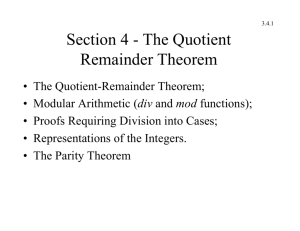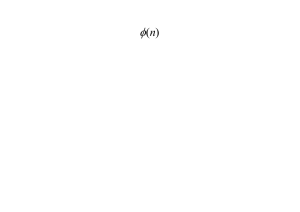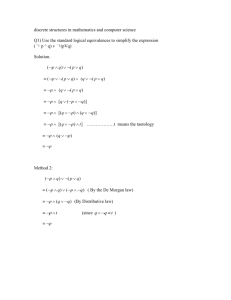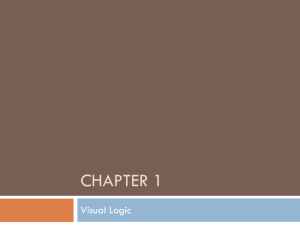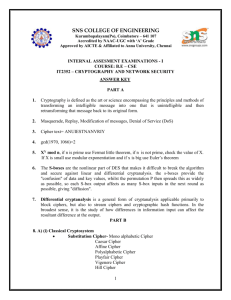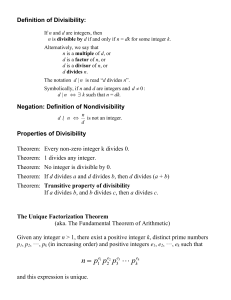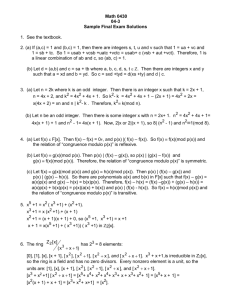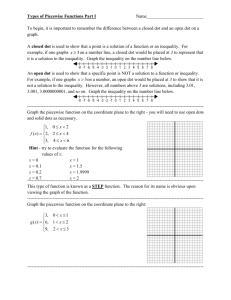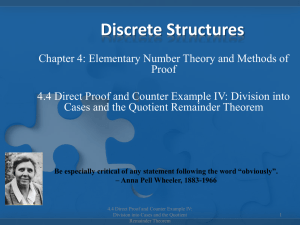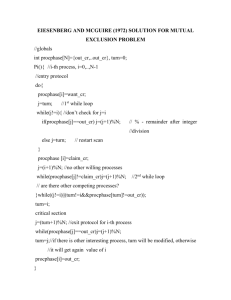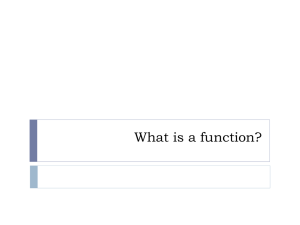ppt - People Server at UNCW
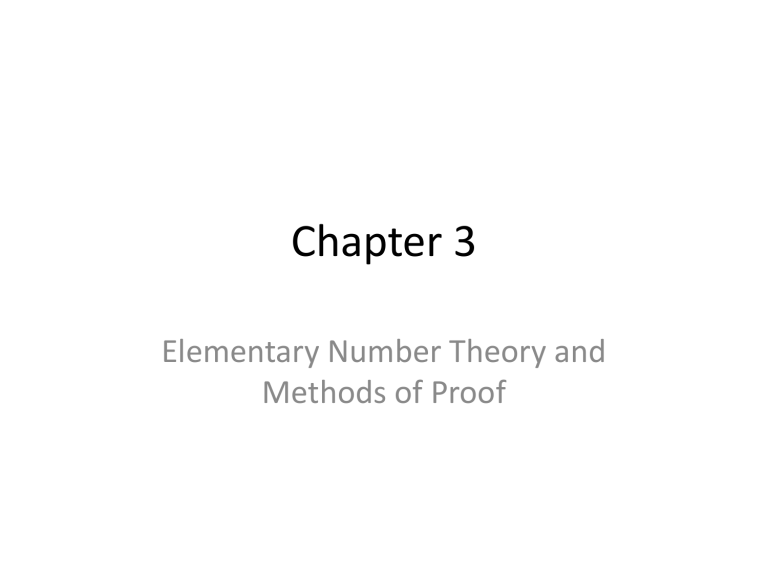
Chapter 3
Elementary Number Theory and
Methods of Proof
3.5
Direct Proof and Counterexample 5
Floor & Ceiling
Floor & Ceiling
• Definition
– Floor
• Given any real number x, the floor of x, denoted ⎣ x ⎦ , is defined as: ⎣ x ⎦ = n ⇔ n ≤ x < n + 1.
– Ceiling
• Given any real number x, the ceiling of x, denoted ⎡ x ⎤ , is defined as: ⎡ x ⎤ = n ⇔ n-1 < x ≤ n.
Examples
• Compute ⎣ x ⎦ and ⎡ x ⎤ for the following:
– 25/4
• ⎣ 25/4 ⎦ = ⎣ 6+ 1/4 ⎦ = 6
• ⎡ 25/4 ⎤ = ⎡ 6+ 1/4 ⎤ = 7
– 0.999
• ⎣ 0.999
⎦ = ⎣ 0 + 999/1000 ⎦ = 0
• ⎡ 0.999
⎤ = ⎡ 0 + 999/1000 ⎤ = 1
Examples
• The 1,370 soldiers at a military base a re given the opportunity to take buses into town for an evening out. Each bus holds a maximum of 40 passengers
– What is the maximum number of buses the base will send if only full buses are sent?
• ⎣ 1,370/40 ⎦ = ⎣ 34.25
⎦ = 34
– How many buses will be needed if a partially full bus is allowed?
• ⎡ 1,370/40 ⎤ = ⎡ 34.25
⎤ = 35
Addition Property of Floor
• Does ⎣ x + y ⎦ = ⎣ x ⎦ + ⎣ y ⎦ ?
• Can you find a counterexample where the case is not true. If so, then you can prove that equality is false.
– How about x = ½ and y = ½ ?
• ⎣ ½ + ½ ⎦ = ⎣ 1 ⎦ = 1
• ⎣ ½ ⎦ + ⎣ ½ ⎦ = 0 + 0 = 0
• hence, the equality is false.
Proving Floor Property
• Prove that for all real numbers x and for all integers m, ⎣ x + m ⎦ = ⎣ x ⎦ + m
– Suppose x is a particular but arbitrarily chosen real number and m is particular but arbitrarily chosen integer.
– Show: ⎣ x + m ⎦ = ⎣ x ⎦ + m
• Let n = ⎣ x ⎦ , n is integer n ≤ x < n+1
• n + m ≤ x + m < n + m + 1 (add m to all sides)
• ⎣ x + m ⎦ = n + m (from previous)
• since n = ⎣ x ⎦
• Thus ⎣ x + m ⎦ = ⎣ x ⎦ + m
• Theorem 3.5.1
Floor of n/2
• Theorem 3.5.2 Floor of n/2
– For any n, ⎣ n/2 ⎦ = n/2 (if n even) or (n-1)/2 (if n odd)
• Examples
– Compute floor of n/2 for the following:
• n = 5: ⎣ 5/2 ⎦ = ⎣ 2 ½ ⎦ = 2 = (5-1)/2 = 2
• n = 8: ⎣ 8/2 ⎦ = ⎣ 4 ⎦ = 4 = (8)/2 = 4
Div / Mod and Floor
• There is a relationship between div and mod and the floor function.
– n div d = ⎣ n / d ⎦
– n mod d = n – d ⎣ n/d ⎦
• From the quotient-remainder theorem, n = dq + r and 0≤r<d a relationship can be proven between quotient and floor.
• Theorem 3.5.3
– If n is any integer and d is a positive integer, and if q =
⎣ n/d ⎦ and r = n – d ⎣ n/d ⎦ then, n = dq + r and 0≤r<d

